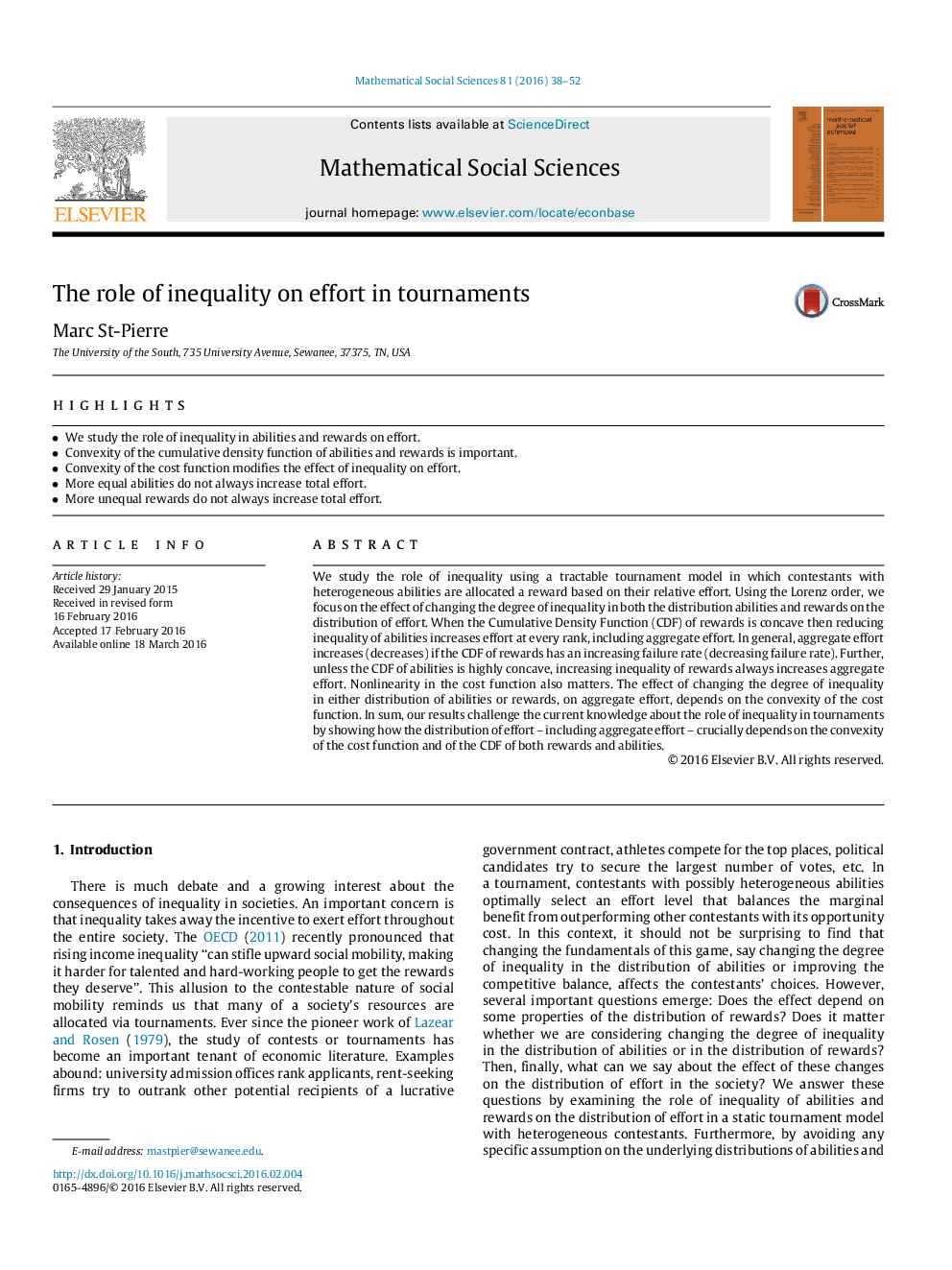| Article ID | Journal | Published Year | Pages | File Type |
|---|---|---|---|---|
| 972492 | Mathematical Social Sciences | 2016 | 15 Pages |
•We study the role of inequality in abilities and rewards on effort.•Convexity of the cumulative density function of abilities and rewards is important.•Convexity of the cost function modifies the effect of inequality on effort.•More equal abilities do not always increase total effort.•More unequal rewards do not always increase total effort.
We study the role of inequality using a tractable tournament model in which contestants with heterogeneous abilities are allocated a reward based on their relative effort. Using the Lorenz order, we focus on the effect of changing the degree of inequality in both the distribution abilities and rewards on the distribution of effort. When the Cumulative Density Function (CDF) of rewards is concave then reducing inequality of abilities increases effort at every rank, including aggregate effort. In general, aggregate effort increases (decreases) if the CDF of rewards has an increasing failure rate (decreasing failure rate). Further, unless the CDF of abilities is highly concave, increasing inequality of rewards always increases aggregate effort. Nonlinearity in the cost function also matters. The effect of changing the degree of inequality in either distribution of abilities or rewards, on aggregate effort, depends on the convexity of the cost function. In sum, our results challenge the current knowledge about the role of inequality in tournaments by showing how the distribution of effort–including aggregate effort–crucially depends on the convexity of the cost function and of the CDF of both rewards and abilities.
